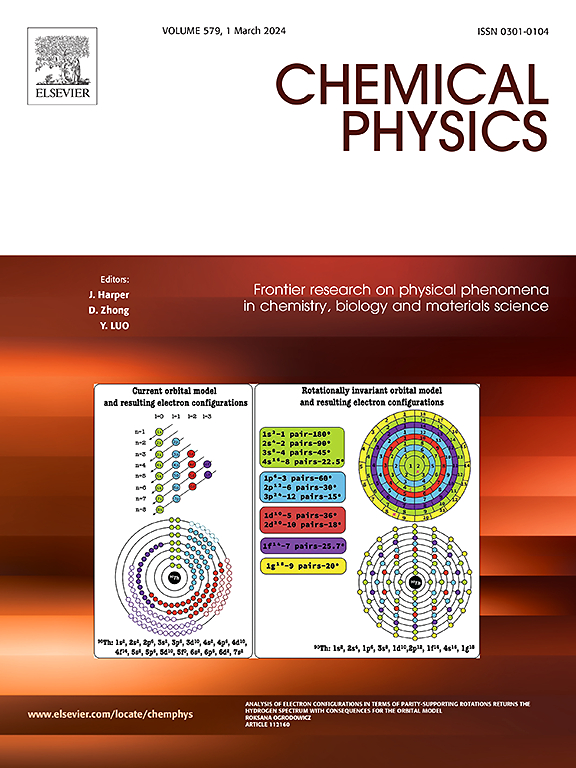二维C-BN异质结构中不同界面键构型和比例对过渡到金属特征影响的第一性原理研究
IF 2
3区 化学
Q4 CHEMISTRY, PHYSICAL
引用次数: 0
摘要
二维(2D)材料的不同堆叠构型预计会对其结构产生重大影响,并有效地调节其物理性质。二维类金刚石碳(C)和立方氮化硼(cBN)表现出比其块状材料更好的电子性能。由于(111)取向具有良好的晶格匹配性,研究了不同比例的二维(111)取向的不同堆叠结构,这些结构可以获得可控的电子特性。结果表明:随着层数的增加,结构变得更加稳定;界面处的CB键比CN键的结构更稳定。在他们所构建的非均相结构的电子性质中,二维BN特征更占优势,当BN层数达到3层以上时,它们表现出金属特征。新发现进一步拓展了二维类金刚石C和cBN非均相结构在半导体领域的应用。本文章由计算机程序翻译,如有差异,请以英文原文为准。

A first-principles study on the impact of different interface bonding configurations and proportions on the transition to metallic characteristics in two-dimensional C-BN heterostructures
The diverse stacking configurations of two-dimensional (2D) materials are anticipated to exert significant influence over the structure and effectively modulate its physical properties. 2D diamond-like carbon (C) and cubic boron nitride (cBN) show better electronic properties than their bulk materials. Due to their good lattice matching, the 2D different stacking structures for the (111)-oriented are investigated by various proportions, which would receive controllable electronic properties. The results show that the structures become much more stable following the increase in the number of layers; the structures of C![]() B bonded at the interface are more stable than the C
B bonded at the interface are more stable than the C![]() N bonded. In the electronic properties of the heterogeneous structures they constructed, the 2D BN characteristics are more dominant, and they show metallic characteristics when BN layers reach more than 3. The new findings further expand the semiconductor fields of 2D diamond-like C and cBN heterogeneous structures applications.
N bonded. In the electronic properties of the heterogeneous structures they constructed, the 2D BN characteristics are more dominant, and they show metallic characteristics when BN layers reach more than 3. The new findings further expand the semiconductor fields of 2D diamond-like C and cBN heterogeneous structures applications.
求助全文
通过发布文献求助,成功后即可免费获取论文全文。
去求助
来源期刊

Chemical Physics
化学-物理:原子、分子和化学物理
CiteScore
4.60
自引率
4.30%
发文量
278
审稿时长
39 days
期刊介绍:
Chemical Physics publishes experimental and theoretical papers on all aspects of chemical physics. In this journal, experiments are related to theory, and in turn theoretical papers are related to present or future experiments. Subjects covered include: spectroscopy and molecular structure, interacting systems, relaxation phenomena, biological systems, materials, fundamental problems in molecular reactivity, molecular quantum theory and statistical mechanics. Computational chemistry studies of routine character are not appropriate for this journal.
 求助内容:
求助内容: 应助结果提醒方式:
应助结果提醒方式:


